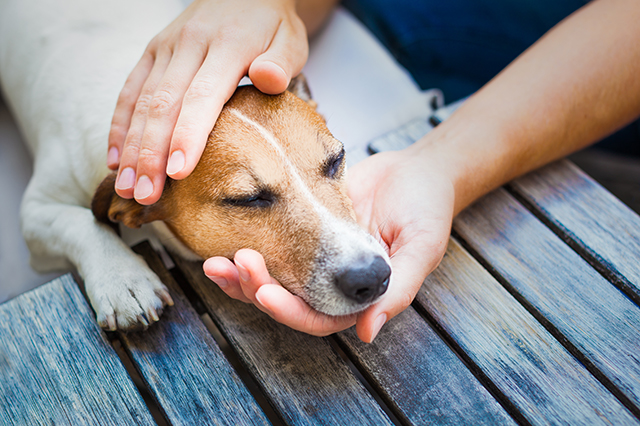Part of the joy of traveling with pets is the unexpected moments. They amuse us with their antics and enthusiasm over very simple things. But some unexpected moments are nothing to laugh about. It’s important to plan for emergency situations involving your pet just as you would for yourself.
Medical Emergencies
Be prepared for any turn of events by knowing how to get to the nearest animal hospital. Also have the name and number of a local animal shelter and a local veterinarian handy – ask your veterinarian for a recommendation. Take first-aid supplies with you and know how to use them. An animal in pain may become aggressive, so exercise caution at all times.
The two most common emergencies for pets are heatstroke and hypothermia.
Heatstroke: Symptoms of heatstroke include rapid and shallow breathing, excessive salivation, heavy panting, reeling hot to the touch, glazed eyes, dizziness, dark red or purple gums or tongue, vomiting and a body temperature of 104 degrees or higher. If your pet experiences these symptoms, place him on a table in the shade and dampen him with cold water, focusing on the head and neck area. Give him small amounts of water as well.
Hypothermia: Symptoms of hypothermia include shivering, weakness, lethargy, feeling cold to the touch and a body temperature of 95 degrees or lower. If your pet experiences hypothermia symptoms, make him comfortable in a warm area and wrap him in a blanket or some warm towels. Massage his head, chest and legs to warm your pet up more quickly.
Prevention: The best way to treat heatstroke or hypothermia is to prevent it. Do not leave pets unattended in a car, even if only for a few minutes. Also heed airlines’ restrictions on pet travel and carefully investigate animal welfare policies to make certain the airline has safeguards to protect your pet from both conditions.
Other preventive measures are to avoid strenuous exercise, including activities like hiking and playing fetch, when the sun is strongest (10 a.m.-2 p.m.), and to provide your pet access to clean, fresh drinking water at all times.
Always be alert to your pet’s physical condition and watch for symptoms – immediate attention to the situation may mean the difference between life and death. If your pet is struck with either disorder, take him to an animal hospital or veterinarian as fast as safely possible.
Emergency Events
Avert a potential tragedy by planning in advance where you will go with your pet in case of evacuation during your trip. Most emergency evacuation shelters do not accept pets, and domesticated animals do not fare well if left to weather an emergency on their own, especially when far from home. Above all, don’t wait for disaster to strike. Leave as soon as the evacuation order is announced and take your animal with you.
AAA members save on pet prescriptions. Find out more.
















